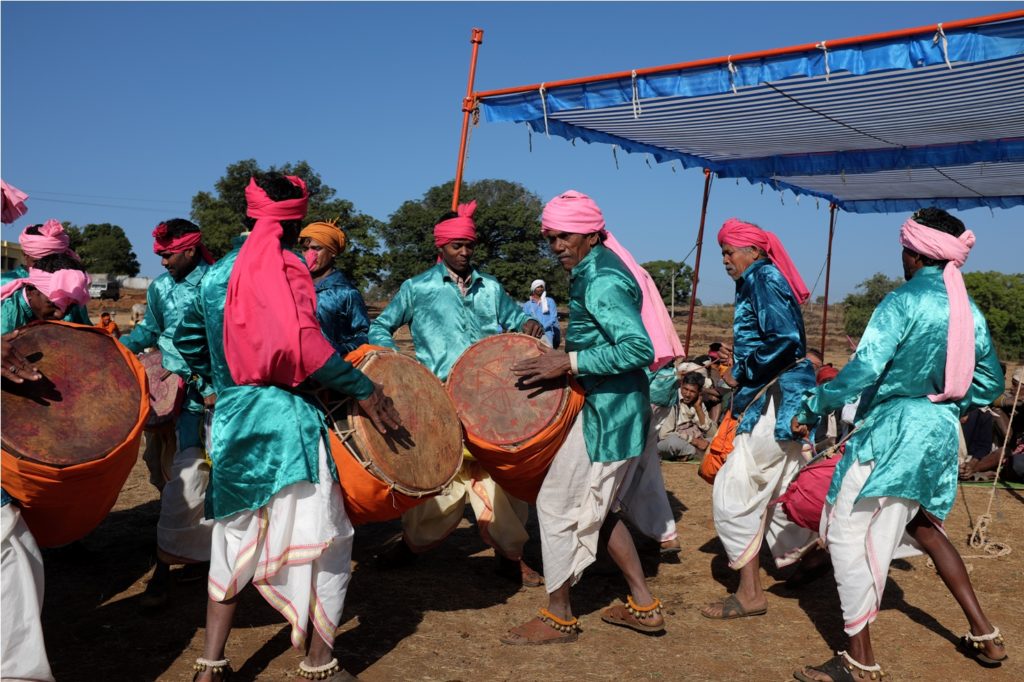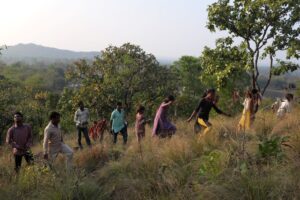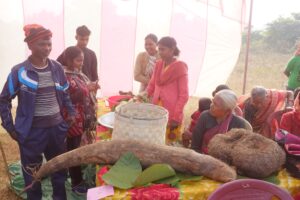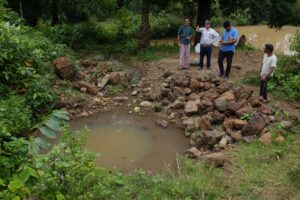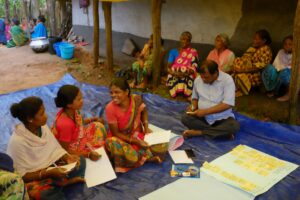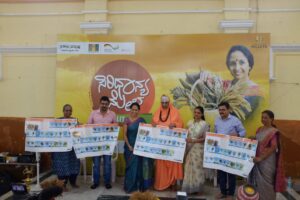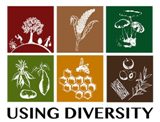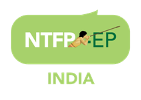Patalkot as the Sanskrit origin of its name suggests is a deep valley spread over 79 km2 located 78 km from Chhindwara in Madhya Pradesh. This unique horse-shoe shaped valley is surrounded by hills with several pathways and recently developed roads to reach the 12 villages located within the valley. Patalkot’s villages are home to Gonds and the indigenous Bhariya community which is classified as one of India’s 75 PVTGs.
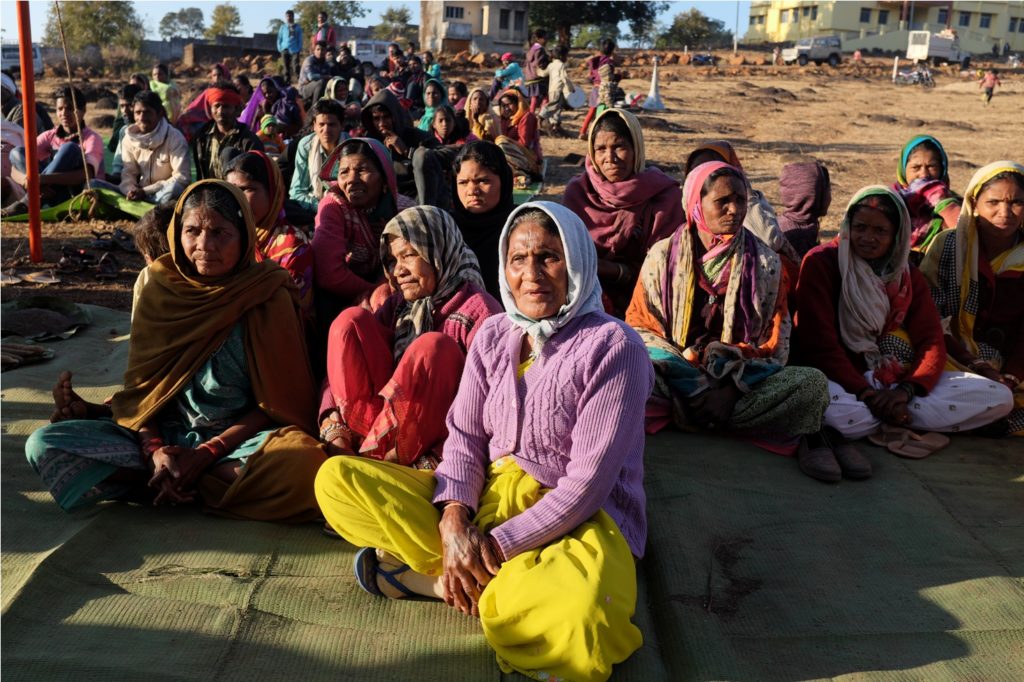
On the 28th of January Using Diversity (UD) Network partner Nirman brought the villagers and community leaders of the 12 villages of Patalkot together for an Uncultivated Food and Traditional seed Mela at Gaildubba village. The aim of the Mela was to bring together villagers, farmers and community leaders from Patalkot’s 12 villages to share and celebrate the region’s rich diversity of uncultivated and wild food, traditional crops and medicinal plants and herbs. The event was also aimed at raising awareness about key challenges facing the people of these villages which included:
- Threats to their forests and access to forests and forest produce
- Challenges to traditional agricultural practices and loss of traditional crops
- Securing forest rights for the 12 villages of Patalkot through the proper implementation of FRA and filing of Habitat Rights claims under the Act
They even commenced with four traditional dance performances. Villagers from Ghanna Kodia village clad in dhotis, fluorescent kurtas and pink pagdis performed the Bade Dhol Nirat (Big Drum Dance) using large traditional drums called dhols as well as smaller drums. Young men from Chimtipur village performed a skilful and energetic dance on stilts to the beats of drums. Saffron clad men from Jhildhan Ghankori village led by a 10 year old boy performed the Saila Nirat. The women of Chimtipur performed the Setam Nirat.
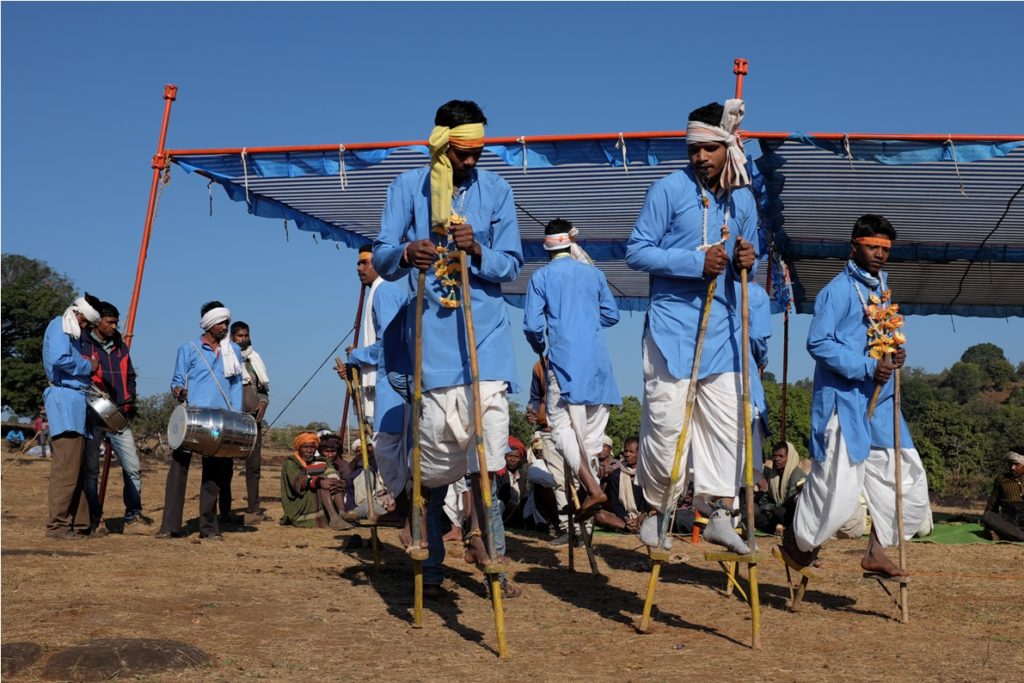
Over twenty different varieties of traditional seeds cultivated by the farmers of Patalkot were on display. They included a variety of millets, minor millets, pulses, beans and paddy seeds. In addition a number of edible wild tubers, fruits like mahua and medicinal roots, bark and tubers were also on display.
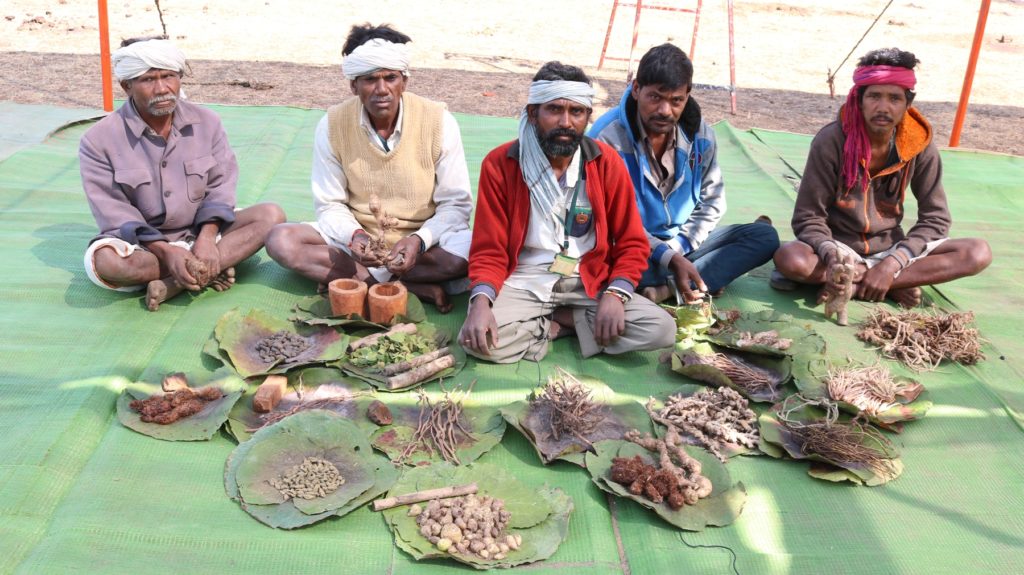
Kalaram Bharti, a traditional healer from Kade Aam village Charadana hamlet, had brought a variety of medicinal roots, tubers, leaves, fruits, seeds, bark, wood and other plant based medicinal products. He shared the uses and benefits of the different items he had brought for display which included:
- Safed Musli and Kali Musli roots which are used to increase strength and energy
- Burgal, Kadupat and Charata roots which are used to treat malaria
- Jungli adrak which is used to treat cough, cold and congestion
- Van singhara that is used to treat dhat rog
- Antmol root which is used to make a red tea like preparation to combat weakness
- Bhelwa fruit/seed is used to treat wounds like bites and nails entering the skin
- Keokand tuber is used to treat joint pain
- Bara kanda and Sed kanda tubers are used to improve sexual prowess
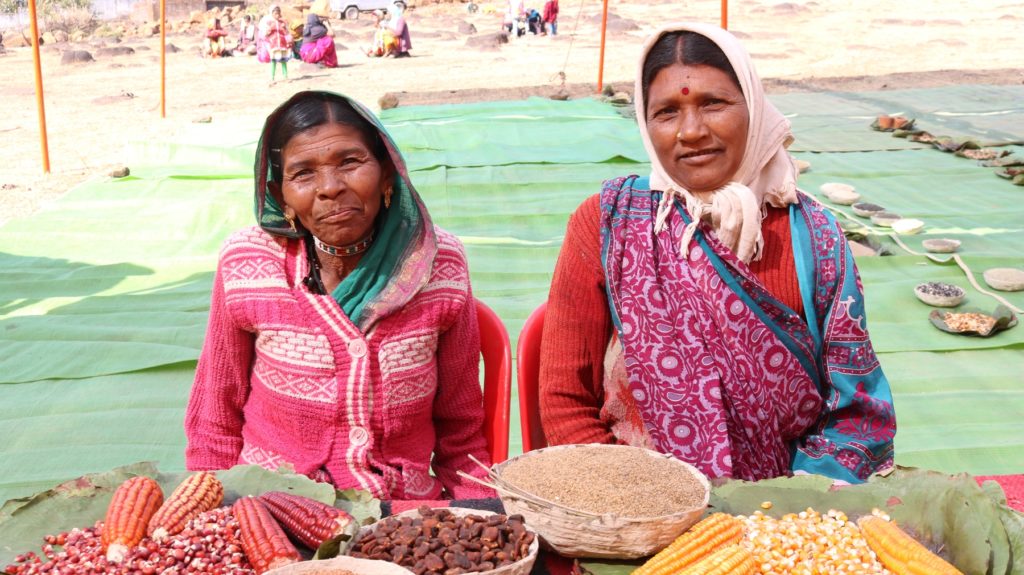
Munia Bai from Sukha Bhand village shared her knowledge about how different traditional crops are processed and consumed. She explained that they have three different kinds of maize/makka which they use to make vegetable preparations and also pound and grind the maize themselves using traditional grinding implements in order to prepare rotis, peench and a rice like preparation. They make roti’s from mandia and these rotis are considered auspicious during Bhariya weddings. They grind Jowari to make bhat (rice like preparation) and rotis. They use mahua to make koa also make daru/alcohol.
Premlal Dandolia, a village elder from Ghanna Koria village, share the uses, benefits and preparation methods of different crops like kali kutki which helps ward off fever and cough. Premlal and fellow villagers described their traditional agricultural practice of dahia/bewar, a form of shifting cultivation. They lamented that due to increasing restrictions from the Forest Department combined with crop depredation by monkeys they have virtually given up dahia. With the reduction in Dahiya a number of traditional crops like bewri and siki (millets) which the villagers used to relish in the past have reduced to the point of extinction from the area.

A number of community leaders from different parts of Patalkot participated in the program and they included:
- Bhaglu Chalatia, Patel of Gaildubba village
- Dhinalal Parteti, Panch of Khamarpur village
- Premlal Mahauri, Panch of Ghanna Koria village
- Santlal, Patwari from Gaildubba village
- Shankar Bhalaji, Sarpanch of Harra Kachar Panchayat
- Dasmi Bai, Sarpanch of Chimtipur Panchayat
- Kisanlal Dadaji, Panch of Sukha Bhand village
Naresh Biswas, the chief functionary of Using Diversity Network partner organisation Nirman, addressed the gathering and discussed a variety of the challenges facing the villages of Patalkot and the objectives of the UD project. He pointed out how the Bhariyas of Patalkot are classified by the Government as a Particularly Vulnerable Tribal Group (PVTG) and as a result a number a special schemes, benefits and facilities are available to them like special reservation in government posts like Police, Patwari, Teachers. However, these benefits have been largely taken by the Bhariyas inhabiting upper villages which the Bhariyas of Patalkot have largely been left out. He urged the villagers and their leaders to increase their awareness about the special benefits for the Bhariyas of Patalkot and to unite to demand and claim their rights to these benefits. He also spoke about the implications of the Forest Rights Act (FRA) for the Bhariyas of Patalkot and the Habitat Rights clause in particular. The rights of the Bhariyas to the forests of Patalkot, as envisaged by FRA, has not been implemented properly despite claims of government officials. Naresh shared the experience of the Baigas of Baigachak in Dindori who recently received habitat rights and said that the Bhariyas of Patalkot should come together to prepare and submit a Habitat Rights claim for Patalkot which will help secure their rights to their forests and land and prevent encroachment by outsiders and excesses of the Forest Department.

Naresh gave the example of how the viewpoint had recently been taken over by a private enterprise and completely fensed off with the indigenous inhabitants prevented from using the area even for travelling. This according to him was in violation of PESA as this is a Schedule V area. He pointed out that if Patalkot gets Habitat Rights they will have a further legal weapon to prevent such encroachment in their areas. The villagers agreed to come together to develop and submit a Habitat Rights claim for the 12 villages of Patalkot. It was decided that the UD fellows and Nirmaan would facilitate regular meeting every month involving 2 representatives from each village to take the implementation of FRA and filling of Habitat Rights and Individual Forest Rights (IFR) claims forward. Naresh also shared the objectives of the UD project’s Community Seed Bank and seed exchange initiatives which are targeted at the protection and revival of traditional seeds and crops. He also talked about the rich diversity of uncultivated food of Patalkot and efforts to safeguard and protect them.
School children from Gaildubba were given a guided tour of the different seeds and uncultivated foods on display by Bhaglu Chalatia, the Patel of Gaildubba village.

Some of the villagers who attended the event shared their feedback about the program –
- Chottanlal Khamaria from Harra Kachar said he really enjoyed the program and was happy to see the rich variety of seeds which used to be sown by their elders as well as the different uncultivated food of their region. He is committed to returning to his village and cultivating these different crops and also working together with all the inhabitants of Patalkot to claim forest and habitat rights as described by Naresh Biswas.
- Sundarlal Uike from Ghanna Koria was extremely motivated by this event which highlighted the rich crop diversity, uncultivated foods and medicinal plants of Patalkot. He pointed out that Patalkot is famous in cities like Chhindwara for its medicinal plants and herbs but unfortunately they are steadily losing their knowledge of these medicinal plants and such event will help build the necessary awareness to safeguard and promote this traditional knowledge.
- Sonuram Khamaria of Ghanna Koria shared that he was very pleased that this event drew attention to the seeds and uncultivated foods that are steadily declining and being lost from Patalkot and he is happy to work together to protect and revive these crops and uncultivated foods.
- Pulli Bai from Chimtipur said that earlier they used to eat a lot of different forest foods like Seth kanda, nandmati, karu kanda (tubers); baans karla (bamboo shoot), mahua, koia, dhobe bhaji, aama ki goi. Earlier they used to carry out Dahia/Bewar cultivation where they sowed kangna, bewur, madia and other crops. However, currently people are dependent of ration rice and have stopped eating forest food and the crops they cultivated earlier. She feels that by rejecting their traditional forest foods and crops the current generation is weaker and dying faster.

The program ended with a pledge by all participants to work together for the revival of traditional crops, uncultivated food and habitat and forest rights for Patalkot’s villages.

